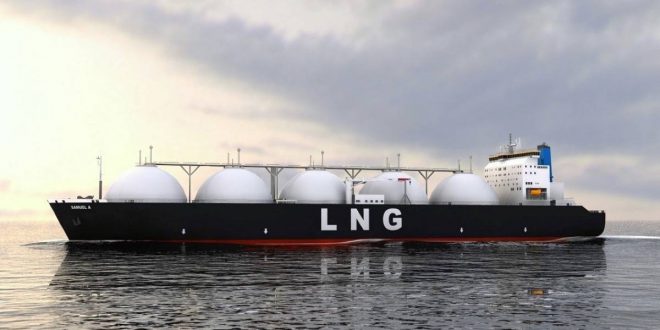Cheniere Energy expects LNG demand to increase until 2040, though it may decline beyond that due to continued global action to reduce greenhouse gas emissions, presenting risks for existing US liquefaction terminal operators and project developers, the company said April 9.
The conclusions were issued in a report assessing the long-term impact of climate change mitigation policies and trends that are in process or under consideration globally.
North American exporters are under pressure to show that LNG produced from shale gas can bridge the energy transition to greater use of cleaner-burning fuels and aid rather than impede buyers’ carbon reduction goals. At the same time, they must address how a future of lower demand for fossil fuels will impact their growth goals. Some developers have delayed or canceled new projects.
“Cheniere can minimize the risk beyond 2040 to its business from peak demand by maintaining a disciplined capital investment and return strategy, consistent with expected market trends,” the company said in the report.
Cheniere’s analysis relied on three scenarios. One produced by the International Energy Agency accounts for existing policy frameworks and announced policy intentions, including the Paris Agreement, and reflects the potential impact of these on the energy sector out to 2040. The second, also published by the IEA, involves sustainable development more generally. The third, by consulting firm McKinsey, is part of its global gas outlook to 2050.
In addition, Cheniere incorporated cost-curve analysis of LNG projects based on projected supply, demand, costs and carbon pricing.
“Under all three scenarios, demand for LNG increases from 2020 levels through 2040, resulting in supply gaps to varying degrees,” the report said. “Additional LNG supply, i.e., beyond existing and under construction liquefaction projects, would be needed to meet this demand.”
The report added that “continued action to reduce global GHG emissions may cause LNG demand to decline beyond 2040.”
Cheniere hopes to be producing LNG from its ninth and, for now, final liquefaction train by the end of this year.
The company has also proposed an up to 10 million mt/year mid-scale train expansion at its Texas facility. It has yet to make a final investment decision, however, as it takes a measured approach to its growth plans in light of market and climate change impact considerations. In December, CEO Jack Fusco said in an interview that the project “will happen when it happens.”
As the biggest US LNG exporter, Cheniere is a major buyer of physical gas that it uses in the liquefaction process. Much of the gas is drilled in shale basins stretching from the US Gulf Coast to the Northeast to Western Canada.
In February, Cheniere said it would give its LNG customers emissions data associated with each cargo it produces at its two US export terminals, in a bid to make its environmental footprint more transparent.
Emissions goals
With strict carbon emissions goals, European utilities are being pressured to shy away from signing new deals for importing US shale gas. France’s Engie said in November 2020 that it had halted talks with NextDecade about a supply deal tied to the developer’s proposed Rio Grande LNG facility in Texas.
In its new report, titled “Climate Scenario Analysis: Transitional Risk,” Cheniere said it believes its full-service business model will be resilient regardless of the impact of the scenarios it considered, or other market factors.
“The uncertainty in how the market will evolve and the continued importance of cost competitiveness reinforce the importance of a disciplined approach to deploying capital,” the report said.
“Ongoing monitoring of energy policies, market trends and the LNG business cycle will continue to be important to inform business decisions. While cost is paramount, commercial innovation, flexibility and non-economic factors, such as reputation and reliability, will be valuable differentiators in a competitive global market.”

 Iran Energy News Oil, Gas, Petrochemical and Energy Field Specialized Channel
Iran Energy News Oil, Gas, Petrochemical and Energy Field Specialized Channel



